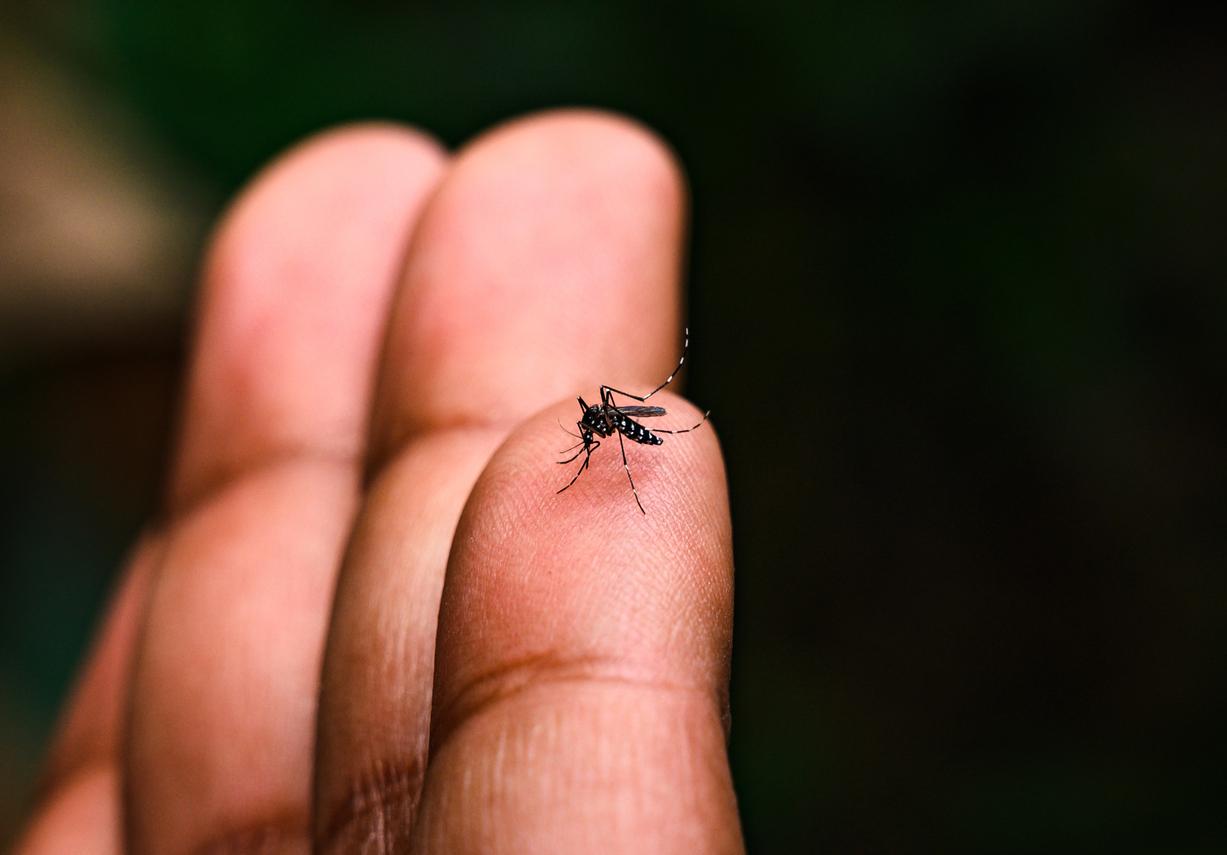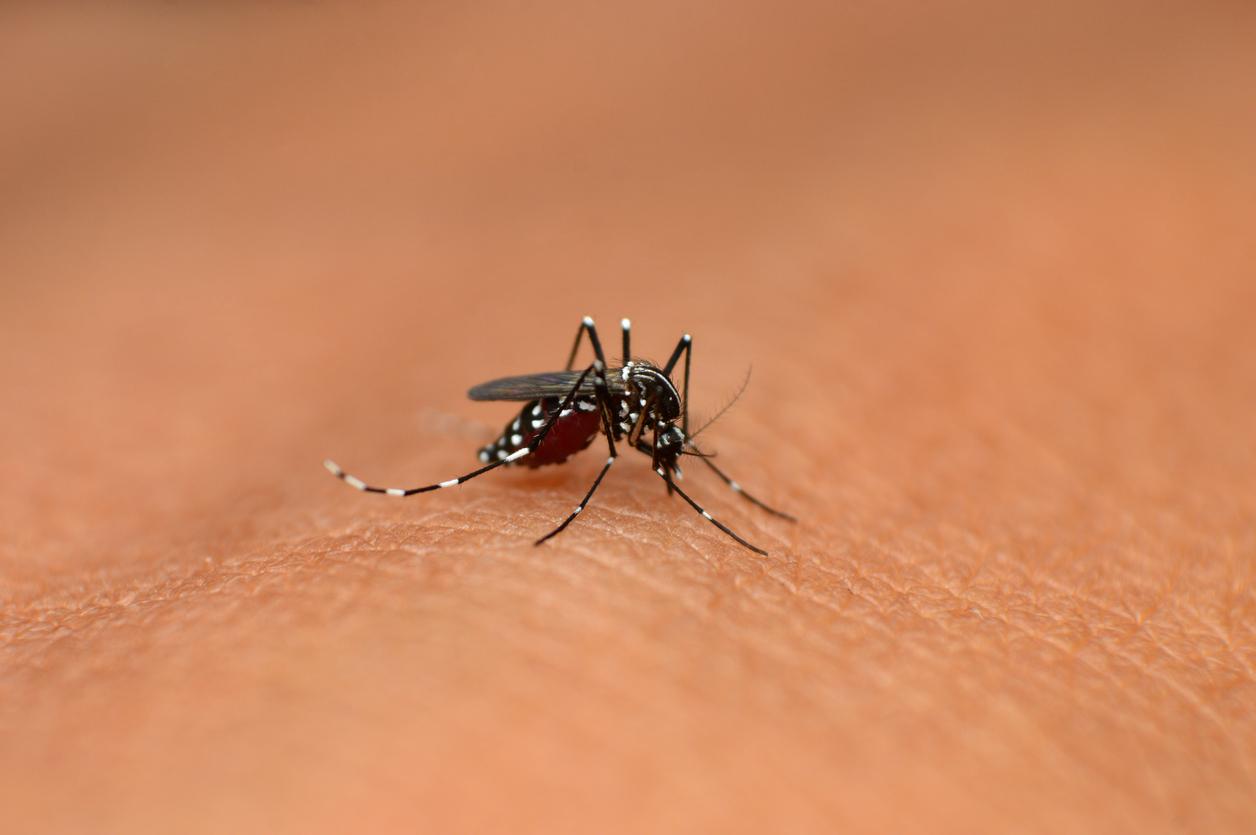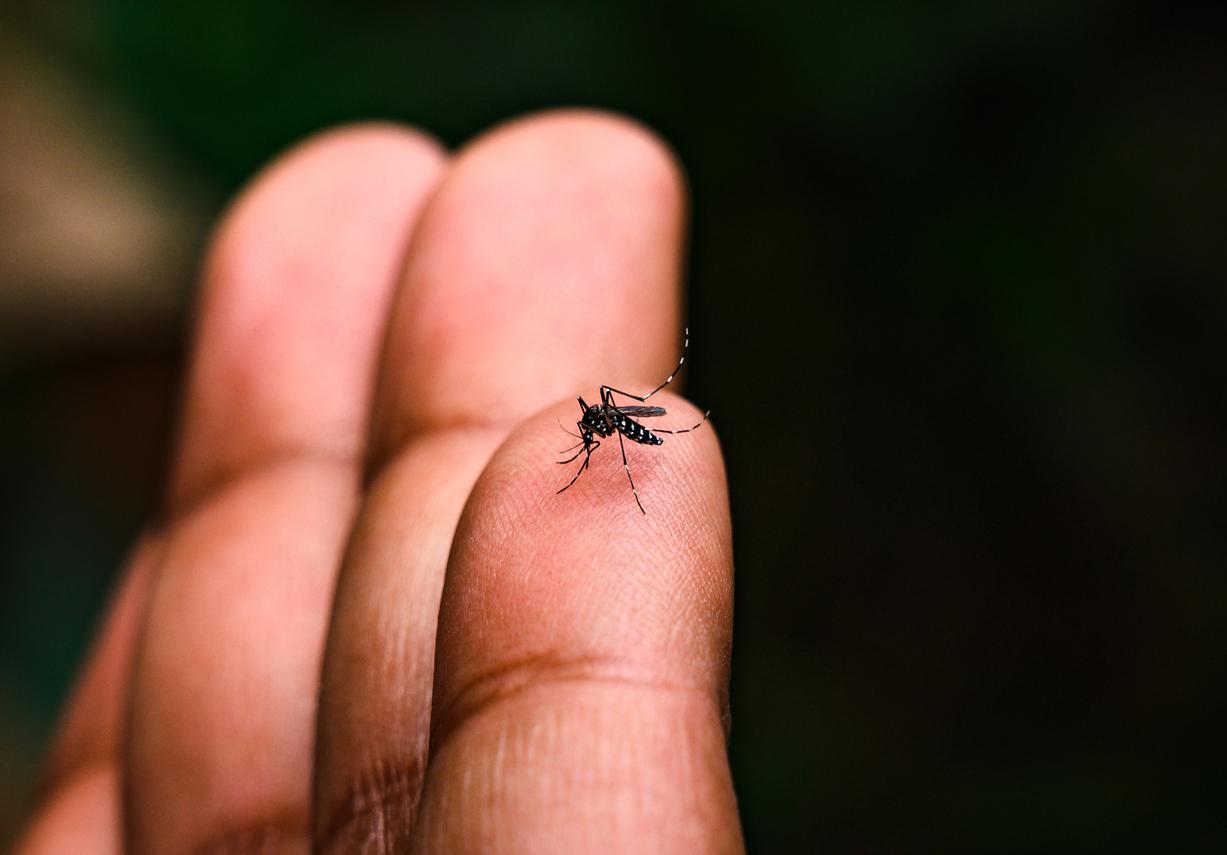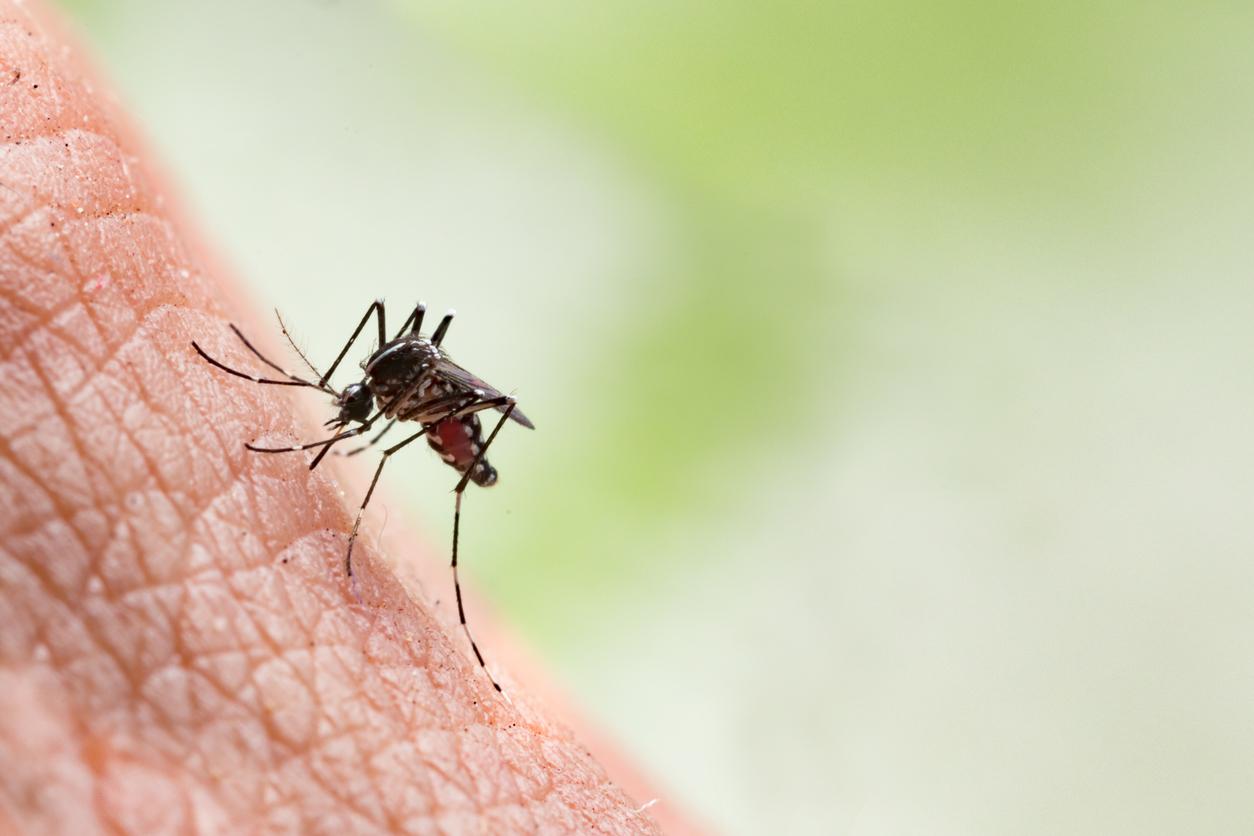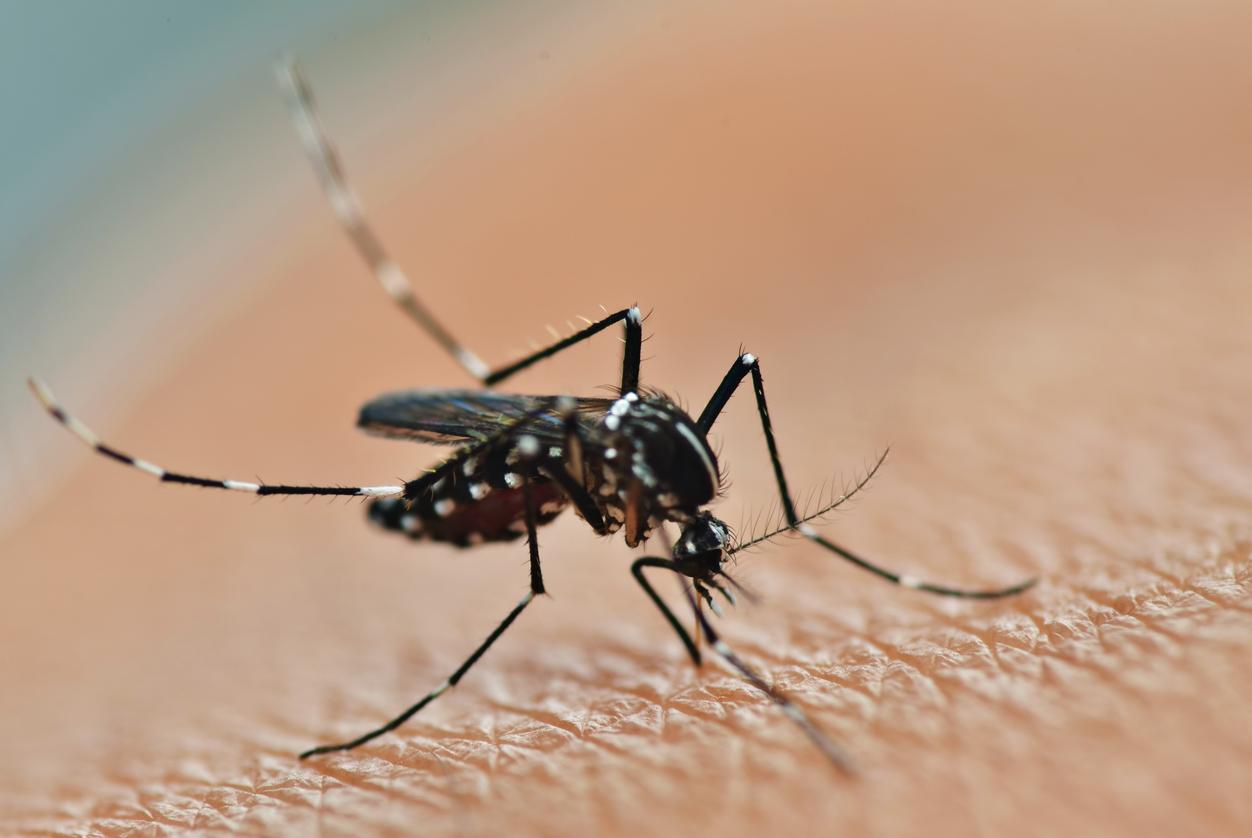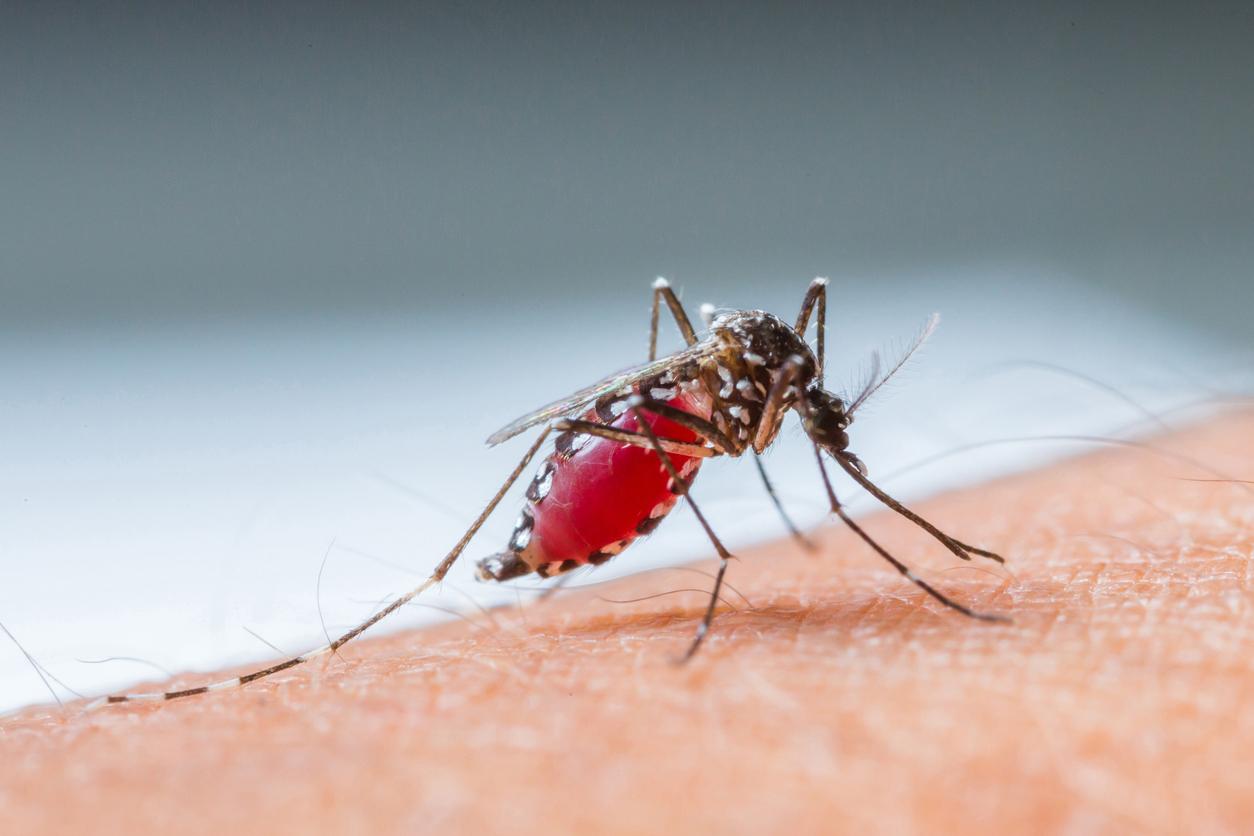According to the Vigilance-moustiques site, the risk of being bitten by the tiger mosquito is now maximum in 57 departments of metropolitan France. The animal can cause dengue fever, Zika or chikungunya.

- The risk of being bitten by a “tiger” mosquito concerns 57 departments in France
- This mosquito can transmit diseases such as dengue, chikungunya or be a vector of the Zika virus
In the midst of the Covid crisis, the strong comeback of the tiger mosquito… Friday, April 24, Vienne, Deux-Sèvres, Charente, Cher, Loire-Atlantique and Yvelines were added to the list of departments colonized by Aedes albopictus. According to Vigilance-Mosquitoes website, the risk of being bitten by this tropical mosquito is now maximum in 57 departments of metropolitan France. The animal is a vector of tropical diseases such as dengue fever, chikungunya and Zika.
Ten other departments are currently on orange alert, “that is to say that the mosquito has been intercepted there punctually in the last five years”, explains the site. These are Allier, Doubs, Haute-Loire, Haute-Savoie, Indre-et-Loire, Jura, Loir-et-Cher, Oise, Val -Oise and Yonne. Given that “we observe that the departments which are in orange vigilance sooner or later switch to red vigilance”67 departments are colonized or “well on the way to being, i.e. nearly 65% of the territory”warns Vigilance-mosquitoes.
The rest of France is on yellow watch. Thus, the Ardennes, Aube, Calvados, Cantal, Côtes-d’Armor, Creuse, Eure, Eure et Loir, Finistère, Ille-et-Vilaine, Loiret, Manche, Marne, Haute-Marne, Mayenne, Meurthe-et-Moselle, Meuse, Morbihan, Moselle, Nord, Orne, Pas de Calais, Haute-Saône, Sarthe, Seine -Maritime, the Somme, Haute-Vienne, the Vosges and the Territory of Belfort “fare the subject of an entomological watch specially dedicated to the monitoring of the tiger mosquito, without any specimen having been intercepted there punctually”.
flu-like symptoms
The tiger mosquito therefore continues to spread in a worrying way. In just twenty years, this invasive species native to Southeast Asia has colonized five continents. Smaller than the common mosquito, Aedes albopictus measures between 5 and 8 millimeters and has a very specific look, with a black body and white stripes at the level of the legs and its abdomen, hence its name. It thrives in urban areas and can sting up to about 10 meters from its birthplace. It feeds mainly in the morning and at dusk and can transmit Zika, dengue or even chikungunya.
In the majority of cases, Zika is asymptomatic and the patient recovers spontaneously in two to seven days. On the other hand, when there are symptoms, they are most often flu-like (fever, headache, body aches) with rashes and appear within 3 to 12 days of the bite of the tiger mosquito.
Dengue fever or tropical flu also manifests itself by flu-like symptoms, within 3 to 14 days (4 to 7 days on average) after the bite. Most often benign, although incapacitating, it can however be complicated in hemorrhagic form and prove to be fatal. Finally, chikungunya infection leads, after an incubation period of 2 to 10 days, to joint damage, often very disabling, especially in the small joint belts (wrists, fingers, ankles, feet) but also in the knees and , more rarely, hips or shoulders. Again, the patient also usually suffers from headaches, aches and muscle pains. In addition to these flu-like symptoms, there may be a skin rash on the trunk and limbs, inflammation of one or more cervical lymph node(s) or even conjunctivitis.
Some tips to avoid getting bitten
Unfortunately, there are no treatments or vaccines for these tropical diseases. The best way to avoid them is therefore to keep the tiger mosquito away.
As the latter can colonize stagnant water and lay its eggs there, empty your clogged gutters and do not leave receptacles such as flower pot cups or watering cans on your balcony or in your garden. If you are in an infested area, wear long clothes to expose your skin as little as possible and turn on a fan. The latter will disperse your smell and will make it more difficult for the mosquito to fly, which will then have a much harder time reaching you. Finally, in terms of repellents, you can use lemon eucalyptus or use certain plants such as geranium, lemon basil, cinnamon basil, lavender or cloves to keep the mosquito at bay.
.









